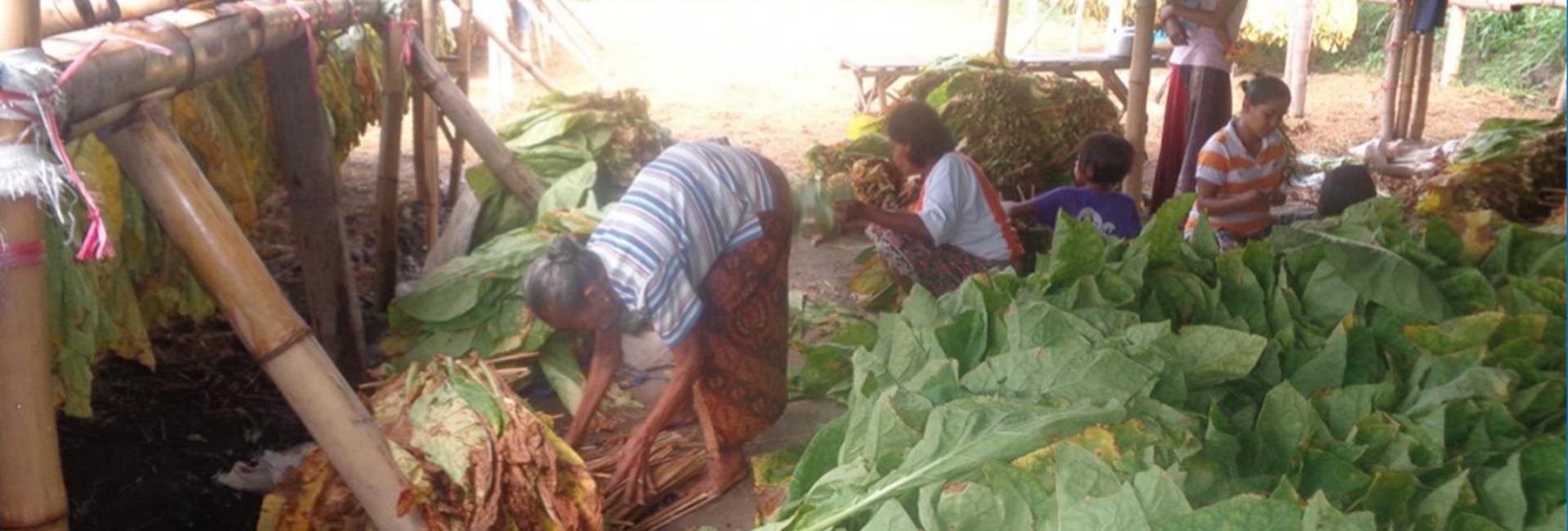In Indonesia, a large number of children is still categorized as working children, and some of them work in unsafe working condition. Statistics Indonesia 2009 show that 6.9 percent of children aged 5-17 years old is considered as working children,[1] almost 43.3 percent are classified as child labour, and 20,7 percent of them works in a hazardous environment which could harm their health, safety, or moral (Minister of Manpower of the Republic of Indonesia, 2015).
The total land area of tobacco farm in Indonesia in 2015 was 208.256 Ha, almost 90% of the land area is in East Java, Central Java, and West Nusa Tenggara (Ministry of Agriculture, 2016). Tobacco growing and production is one type of work that actively involves children. Green Tobacco Sickness (GTS) is one health hazard that is caused by skin exposure to nicotine from green tobacco leaves. McBride, Altman, Klein, and White (1998) described that GST symptoms include, among others, weakness, headache, nausea, vomiting, breathing problem, and diarrhea.
A diagnostic study of child labour by The SMERU Research Institute found that a high percentage of children works in unsafety tobacco growing environment due to improper use of protective equipment (SMERU. 2018). This study reported that a high percentage of children were exposed to high-risk work in two sample districts in Indonesia, namely Lombok Timur (22,73%) and Jember (7,63%). To protect children from the worst form of child labour, the stakeholders need to call for tight regulations. However, insufficient evidence hampers the Indonesian stakeholders to impose new policy and regulation to strengthen the effort to protect the children, especially in the form of child labour in tobacco growing and production.
To collect precise information about the risks and hazards of tobacco farming industry in Indonesia, especially those with child labour. The evidence will be used to support the stakeholders and policymakers in creating new policy and regulation with robust guidance documents concerning the hazards of working in tobacco farms.
The research will adopt quantitative approach that compares the hazardous condition of children working in tobacco farming with children that are not working in tobacco and other agriculture farming activities. The data will be collected through household survey, biological sampling, and environmental sampling. In addition, the research will also collect qualitative information through in-depth interviews at the national, district, sub-district, and village levels.




